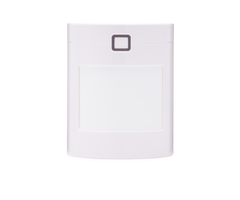Do Pets Set Off Motion Detectors?
No, pets do not set off motion detectors, provided that they are mounted properly and offer pet immunity. But if a motion sensor does not feature pet immunity, or if it is mounted poorly, then it is likely that a pet will trigger it. Mounting location is very important for motion sensors.

Just because a motion sensor offers "pet-immunity" does not mean that it is impossible for a pet to activate the sensor. If a pet gets within the field of view of a pet-immune motion sensor, the device will still activate. Pet-immune just means that the motion sensor "looks" in a way that it will detect the motion of a human intruder walking upright, but not a small animal moving closer to the ground. But if a motion sensor is mounted poorly, or if a pet is able to get up high enough, then it is very possible for a pet to activate the sensor. Also, not every motion sensor offers pet-immunity.
It is important to understand how a motion sensor works. Most motion sensors use passive infrared (PIR) technology to detect motion. This involves responding to significant changes in infrared energy caused by motion. Ideally, a pet-immune motion will detect the infrared energy of a human intruder, while ignoring the infrared energy of a pet. But the motion of a pet also causes a change in infrared energy. If a motion sensor detects this change, it will still activate.
Fortunately, there are a few things a user can do to prevent their motion sensors from detecting their pets. First, the motion sensor should be mounted properly. A mounting height of 7.5 feet is recommended. The motion sensor should also not be facing any furniture or stairways that a pet could climb to get within the sensor's field of view. It is also a good idea to reduce the sensitivity of the motion sensor to prevent a pet from setting it off. This can usually be done by increasing the device's pulse count or by changing or masking the lens for the motion sensor.
Additionally, it is important to make sure that the motion sensor that is being used has a pet-immunity feature. This feature is relatively common on residential motion sensors, but it is more rare for commercial motion sensors. The motion sensor should list a recommended weight range at which pet immunity will be effective. If a user has a pet that weighs 60 pounds, and chooses a motion sensor with 40-pound pet-immunity false alarms are likely. Follow all pet-immunity recommendations in the installation instructions to achieve the best results.
Did you find this answer useful?
We offer alarm monitoring as low as $10 / month
Click Here to Learn MoreRelated Products












Related Categories
- Answered



